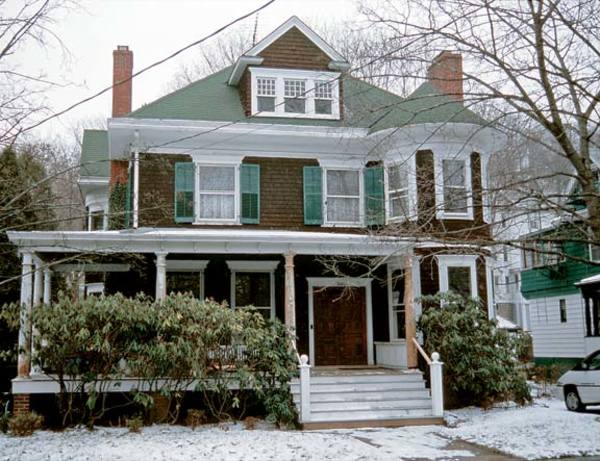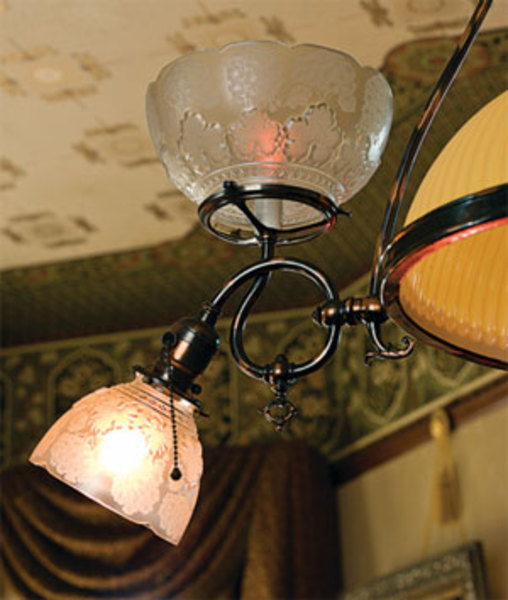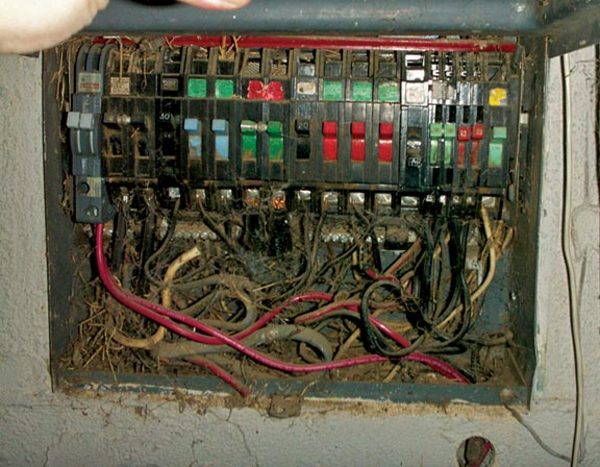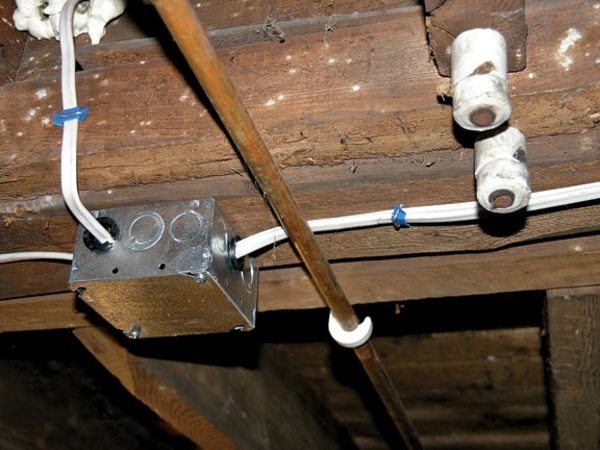Computers, blenders, TVs, even refrigerators—none of these existed when many historic homes were built and first wired. So upgrading electrical systems is an essential task for a lot of old houses. Yet efforts to update electrical systems can often result in damage to historic buildings.
Conversations with top electricians have provided us with a a list of steps to take in order to make rewiring proceed more smoothly, with fewer holes punched in the walls, floors, and ceilings—or, heaven forbid, a structural beam.

Old houses often need updates to electrical systems; the author’s 1903 home was no exception. Follow these tips to get it done without causing undue—or irreparable—damage to your building.
Jon Crispin
Steps to Safely Rewiring Your House
Do an “electrical inventory”
Creating a list of all the devices you’ll be using in the house, and where. Your electrical system needs to match your needs; figuring out where and how you’ll be using power makes it easier to frame the parameters of the job.

Anglo-Japanese spiderwebs light up when the vintage combination gas-electric ceiling fixture is on.
William Wright
Check out local codes and pull permits
Codes set standards for everything from how many outlets you’ll put in each room to what kind of wire you’ll be using. Failing to get permits can result in having to pull out finished work.
Decide whether you want to run just electrical, or data, fire, and security as well
Modern wiring doesn’t just carry electricity, and wireless systems are getting increasingly cheaper and more sophisticated.
Use your list to create a detailed plan of action
Once you’ve done your initial homework, sit down and create a punch list that focuses on what you want done and when you want it completed; the list should be the basis of your relationship with your electrician.

Breaker panels with a jumble of old wires (top) need to be checked carefully by an electrician for intact coatings, burn marks or signs of arcing damage, and solid connections.
Jon Roberts/Courtesy of Perfect Electric Services, Inc
Watch for existing infrastructure
Part of avoiding damage is making sure nobody punches holes in plumbing or existing wiring. This kind of awareness needs to be a top priority in any rewiring job. “Ask twice, drill once”—one historic electrician’s credo—are words to live by.
Always put things in writing, but leave flexibility
Surprises invariably show up, especially when you’re digging deep into a building’s structure.
Find an electrician who knows and understands older buildings
Working in older buildings is a complex, demanding, and difficult process.
Make demolition and reconstruction an integral part of the job
If dealing with the damage done by rewiring isn’t at or near the top of your list, you’re asking for trouble. Make cleanup and restoration as important as the wiring itself.
Aim for “home runs” for key areas and appliances—these are when a wire runs directly from a circuit breaker to an outlet, with no other devices on that breaker
That can reduce loads on the power system and keep popped breakers to a minimum. Additionally, it’s important to keep track of which areas feed to which breakers where more than one outlet is involved. Creating a “balanced” system will make life easier as your load expands and you put new wiring to use.
Integrate switches and plates into the historic look and feel of the house.
Numerous companies offer hardware that matches the appearance and the feel of almost any era, while providing a far greater margin of safety than older equipment does.

New wiring systems often can be run near the old—as in this vintage house that’s been successfully rewired, with a new box placed near now-defunct ceramic knobs on the basement ceiling.
Peter Means
Modern Demands
The demands of modern technology can exacerbate the situation, and they’re at risk of doing so all the time. Older houses were built at a time when 60 amps was considered plenty of electricity for a single residence. By contrast, most new homes are built with 150- or 200-amp service, but 100 amps was the standard for many years—and most experts agree that anything less than 100 amps is unlikely to meet the electrical needs of a contemporary household.
I can attest to that—my house has 100 amps, and it definitely isn’t enough. The service is split between a main panel in the basement and a sub-panel on the third floor. The panel on the basement is so fully loaded that we’ll have to do an upgrade when it comes time to finish the kitchen. And our electrical work to date has left uneven holes punched in our walls and ceilings, which have proved difficult to repair.
Prevention is Key

Creating a clean cut via a hole saw or careful work (bottom) will make it easier to make walls or ceilings whole again. Uneven access holes, like this one punched in the author’s house (top), prove difficult to patch.
Tony Seideman/Peter Means
First and foremost, it’s critical to understand that you’re dealing with an older building—and if keeping the structure of that building relatively intact is your top priority, you need to say so up front. Chances are you may have to pay a little extra to protect your building, but a few preventive dollars and hours can save big sums spent on restoring battered walls and weakened structures.
Make sure specialists each focus on their areas of expertise. “Try to never let the plumber or electrician cut holes, especially in an historic building,” historic architect Robert Gabalski told us. “When you’re walking an electrician through a building, require in the specs very specific ways to cut and patch, or make sure the general contractor does it for them,” he advises.
One of the biggest mistakes many restorers make is to try to replace every piece of old wiring in the system, says Michael Hedrick of Historic Electric Preservation in Fredericksburg, Virginia. “Most efforts tend to be heavy-handed and replace more than what is truly necessary to an older system. Many parts of an older wiring system, if they have been undisturbed, are still quite usable and reasonably safe,” he says. “Bottom line, after inspection by a competent and qualified electrician, leave much of what you find in place and working. There are many houses with electrical systems from the 1920s still delivering power in a safe and efficient manner.”
Editor’s note: Many insurance companies will not offer fire insurance if any knob-and-tube wiring is still in service. Even if you are insured, you may be paying a premium and still be under-insured. Please be sure to check with both local codes and your insurer.







